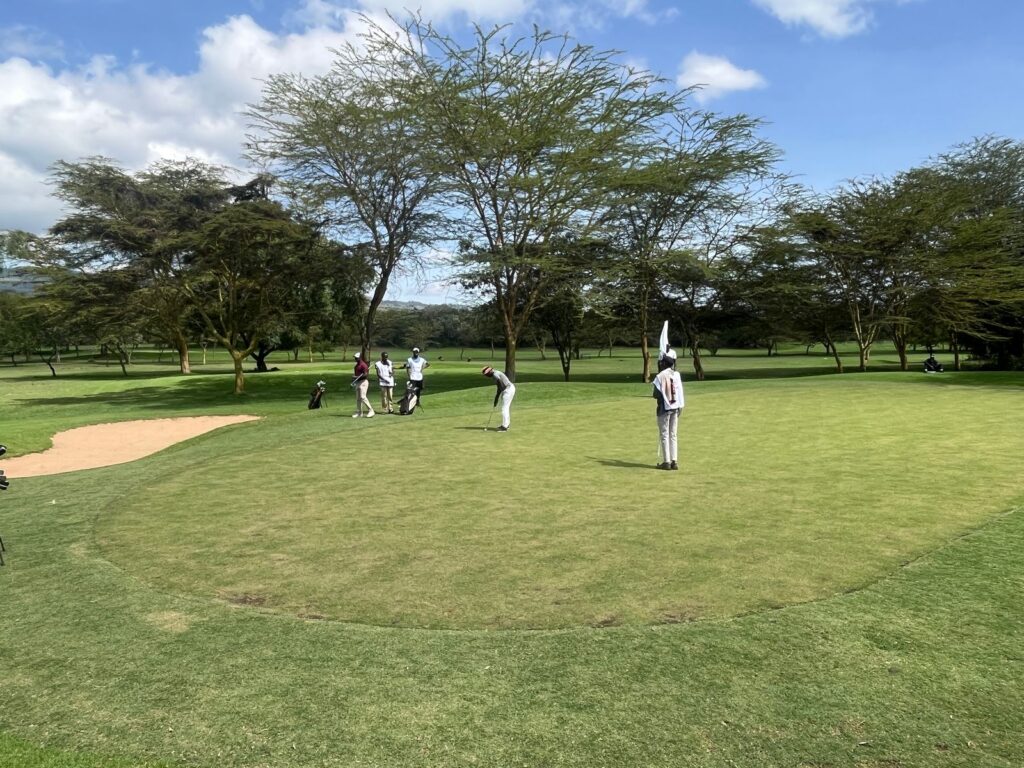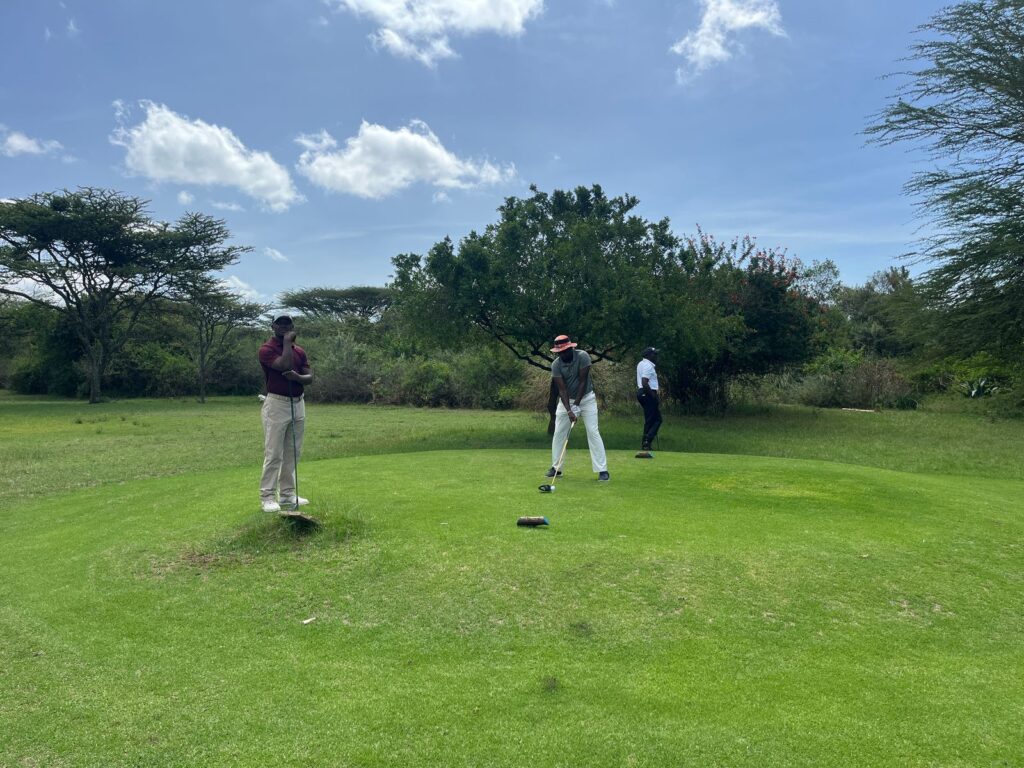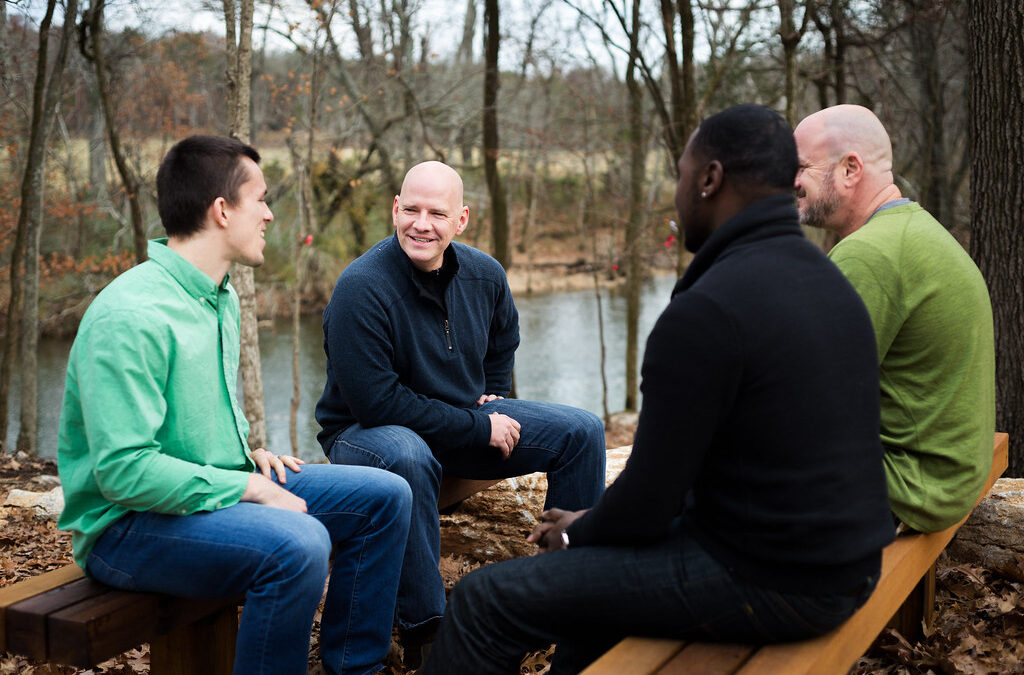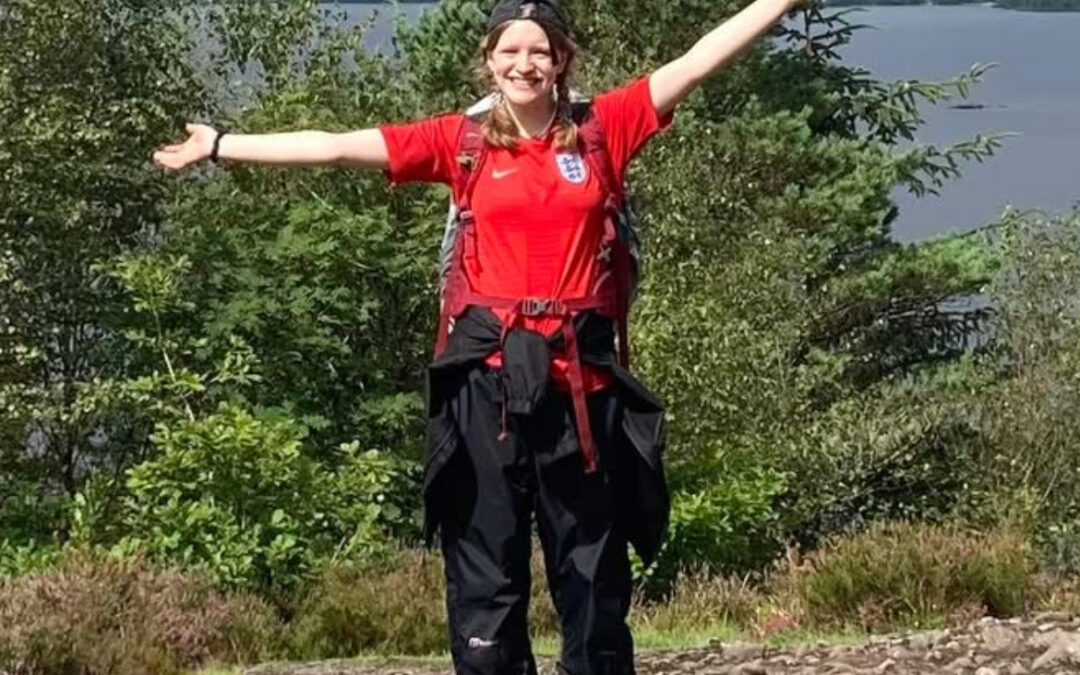How a Kenyan gardener’s raw talent turned dreams of a professional golf career into reality.
In any society, membership of a golf club is a privilege accessible to the wealthier members of the community. In wealthier countries, such as the UK, a golf membership can be more accessible; sacrifices can be made in other parts of one’s life to prioritise a membership.
But many people in Kenya, particularly those who come from humble beginnings just like Simon Njogu, don’t have this luxury. This makes Simon’s journey from life in Kasarani to becoming a professional golfer even more remarkable.
Kasarani is a densely populated informal settlement near Naivasha town, established in the 1980s as workers moved in to support the booming floriculture and hospitality industries around Lake Naivasha. Most residents live in modest housing made from corrugated iron sheets, and many earn between KSh 5,000 and 15,000 a month (about £29 to £86), well below the living wage. Despite the economic hardship, it’s a close-knit community, shaped by the rhythms of labour and the aspirations of those striving for better opportunities.
Simon was born in Naivasha, Kenya, in 1986 and brought up by his single mother. Naivasha is a bustling town about one and a half hours away from the capital city, Nairobi.
His uncle had worked at the Great Rift Valley Lodge and Golf, a hotel and business resort that also boasted a beautiful golf course and members club. It also provided employment for a large proportion of the local people – the neighbourhood, Kasarani, which is located near Longonot along the escarpment, had grown to house these people, and Simon’s uncle first managed to secure him a temporary job as a groundsman, planting trees and maintaining upkeep of the course. This job led to Simon and his family, including a wife and toddler at the time, migrating to Kasarani, which was a mere 15 to 20km from Naivasha, but a universe apart. Where Naivasha has bustling streets, a mix of formal and informal housing and accessibility and services, Kasarani is rural, with informal housing and employment opportunities such as farming and manual labour.
Though life in Kasarani was marked by economic constraints, the settlement’s proximity to the Great Rift Valley Lodge meant that golf was more than just a distant sport, it was part of everyday life.
“In Kasarani, everyone knows all about golf because we are so close to Great Rift Valley [Lodge], [that] so many of us worked there,” Simon says, “when I started working there, I became interested in golf, so I started caddying at the weekends.”
Kenya seconds South Africa in housing the most golf courses in one African country, dating back over one hundred years. It was introduced to Kenya during the British colonial era in the early 20th century, initially as a leisure activity for European settlers.
The sport was historically associated with exclusivity and affluence, played in private clubs that were often inaccessible to the local population, due to expensive membership fees. The Great Rift Valley Golf Resort charge an annual membership 60,000KSh, which is the equivalent of around £340 to be a member. In relation to the average salary of a resident of Kasarani, this is astronomical.
If you’re enjoying this story – try how a non-profit set up a sports club for special needs children.
Since independence in 1963, golf has continued to rise in popularity. Those employed as caddies, groundskeepers or support staff have informal access to the game. Despite its elite origins, golf has slowly become more inclusive, as employees have opportunities to hone their skills without paying membership fees. But it’s very rare for those playing alongside their full-time job to be able to make it their full time job.
After three months, the contract for his environmental role at the resort ended, so Simon took up caddying full time. A caddy not only carries clubs for their player, but they advise their player on which club to use, the fall of the green, the strength of the wind, the distance to the hole, and even sometimes just provide morale. After two months of caddying, he began learning how to play. The knowledge he picked up from this job, one that he took on a whim to make ends-meet, inspired him to try it out with his friends and colleagues after the working day was finished.
“Unfortunately, I’m left handed. At this time I didn’t know anything about golf, and all I could find were right-handed golf clubs. So I started learning how to play with them, and struggled a lot,” Simon says with a laugh.
Simon worked hard for a year as a caddy, and eventually became a permanent fixture for a local member who was playing frequently.
“One day, instead of caddying for him, he decided to give me a driver and a putter and use his irons. He was the one guiding me on the course, telling me ‘you are doing this wrong’, correcting my swing, lowering down my handicap,” Simon says.
The member turned out to be an ex-pro, John Mbuu, who played the Kenya Open in 1972.
At this time, Simon was 23 years old and playing four rounds of 18 holes a week. After five months, Simon’s handicap was at 7. A handicap is a system used in golf to even the playing field. It is put in place so any abilities can play against each other and the game will still remain competitive. The better the golfer, the lower the handicap. A pro typically has a handicap of below zero. It usually takes between one and three years for a handicap to reach below ten.
Simon’s amateur career began to prosper; he won a tournament which in turn meant Company sponsorship to play events around the country. He won two events representing Kenya and won his first international tournament in Ethiopia.
With his handicap lowered to -2, the Professional tour beckoned. The next tournament was the ‘Magical Kenya International Golf Open’. A last minute qualification on Monday meant Simon had a whirlwind 48 hours, because the tournament was due to start on Thursday.
“So I had Tuesday and Wednesday to prepare, to go home and gather clothes and clubs. I also had to raise some money, because for the Kenyan Open you need a certain amount for the entry fee and the caddy fee,” Simon explains.


And then came the issue of a caddy (these are mandatory in professional competitions). The two-day notice meant Simon’s usual caddy was working for the duration of the tournament.
“I thought, what am I going to do? My colleague Justas told me ‘Kevin is a good cut’, because he had been caddying for him at the qualifying rounds,” Simon says.
Cue Kevin Smith, a 54 year old member and former captain of the Great Rift Valley Lodge Golf Club.
“I knew Kevin well, we have played together at Great Rift many times,” Simon says, “The practices went very nicely. So I trusted him with his advice and distances, we enjoyed ourselves on the day of the Open.”
Kevin has been a member of GRVL Golf Club for ten years. His parents were American missionaries and moved to Kenya in 1974, when he was four years old. He grew up in Mombasa on the coast of Kenya with his younger brother and two younger sisters.
“My parents were always giving themselves for the good of others, and that was demonstrated to me growing up,” Kevin says, “That was the motivating factor for me. I thoroughly loved the experience and would be very happy to do it again if I get the chance.”
Most caddies Simon recruited were from Great Rift, where competitions didn’t have so much at stake. If you’re not used to the kind of pressure prevalent at national tournaments like the Kenya Open, it is easy to fall apart.
“I thrive under that pressure, I have done my whole life. If a soccer game was on the line for a penalty kick, I would rather have that pressure than give it to a teammate. Unless you can prove that you can do it better than me, then I’d be glad for you to do it. But if we’re even, I want the pressure. I’ll put the team on my shoulders,” Kevin explains.
“Kevin was a guy who could put me back in the game. He would tell me ‘maybe this is what you’re doing’ and would even be encouraging if I played a bad shot. I managed to play good golf every time I did the wrong thing, the results were coming nicely,” Simon adds.
The only noise that could be heard on that clear Thursday morning was the buzz of anticipation in the air when Simon Njogu stepped up to tee off. And then the satisfying whoosh ping of his driver making connection with the ball. A good start.
“After the first nine holes on the first day, I was thinking, there’s a good chance we’ll make the cut,” Kevin says, “I was nailing the distances, he was nailing the shots. You feel a thrill and excitement. Like yea, we’re on our game, we’re doing this, right?”
‘The cut’, in golf terms, refers to the lowest scoring players of the tournament over Thursday and Friday who go on to play on Saturday and Sunday. These are the players who earn money from the event. In the case of the Kenya Open, 67 players qualified to play the weekend.
But Friday offered unusual weather for Nairobi. There were heavy winds that Kenyan golfers rarely see.
“You can imagine the Euro tour players who have tournaments in Scotland and Cape Town, places with heavy winds where the weather affects their game, they know exactly how to respond to it, which clubs respond in what kind of spin,” Kevin says.
Simon had been chipping outstandingly throughout Thursday, and on Friday, he especially needed one of those chips.
“Instead of it going on the green and near the hole, his club got caught up in the short rough, and the ball just went straight into the bunker in front of him,” He added, “that is so abnormal for him that, you’re kind of like, how did that just happen?”
“We enjoyed ourselves on tournament day, but unfortunately, I didn’t play that well. But next year, because the Kenya Open is a game of planning, I’m going to plan early,” Simon said.
But planning for Kenyan professionals isn’t as straightforward as it would be for other pro’s. Where players in the top 500 are playing professionally every weekend, Simon gets one chance a year to play at that level of pro.
“If we had a calendar of ten events, sometimes I would manage to play five. Playing in those tournaments isn’t easy, because you have to have a certain amount of money to be able to play,” Simon says, “If I make the cut, that money will help me play my next event.”
Caddies are typically paid 10% of their player’s winnings, but because Simon didn’t make the cut, Kevin received nothing. But for him, it wasn’t about the money.
“It’s so much more than showing up and doing 18 holes. It’s the practice time before; the stretching and warm up, how we’re going to communicate in different situations. He has helped me out with my game, and as previous golf captain, it was cool to be able to help him out too,” Kevin says.
Simon and Kevin have decided to continue their companionship throughout the rest of the season.
“I trust him. I have been playing with him in games at Great Rift for three years, so I know how he’ll react. I think our bond works nicely,” Simon says now, looking to future tournaments.
“I don’t know what I would be doing now if I didn’t play golf. I have no idea. I just keep looking forward, trying to practice and improve and qualify for tournaments.”



